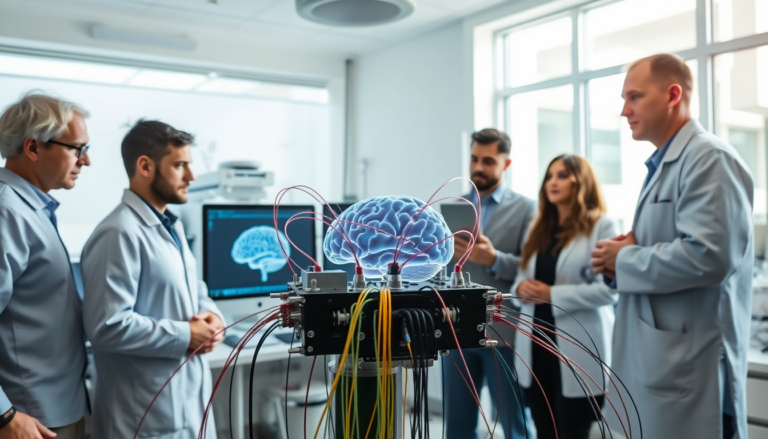Argomenti trattati
Neuralink’s transformative journey for paralyzed patients
Neuralink, the brainchild of Elon Musk, has made significant strides in the realm of brain-computer interfaces (BCIs), enabling paralyzed patients to reclaim aspects of their lives that seemed lost. Among those benefiting from this groundbreaking technology is Bradford Smith, who became the third patient fitted with a Neuralink BCI. His journey is not merely one of technological achievement but also a testament to human resilience against the odds.
From paralysis to creativity: Bradford Smith’s experience
Bradford Smith, diagnosed with Amyotrophic Lateral Sclerosis (ALS), faced the devastating reality of losing his ability to move and communicate. However, with the help of Neuralink’s advanced technology, he recently accomplished the remarkable feat of editing and posting a YouTube video using just his thoughts. This achievement highlights the potential of BCIs to restore functionality and independence to individuals with severe physical limitations.
Just a year prior, the first human recipient of a Neuralink implant demonstrated the ability to control a computer mouse solely through brain activity. Following this initial success, subsequent patients like Alex, who suffered a spinal cord injury, have pushed the boundaries of what is possible. Alex was able to engage with CAD applications and even play popular video games, showcasing the versatility and adaptability of the BCI systems.
Understanding the technology behind Neuralink’s BCI
The BCI that Bradford received is a small, cylindrical device, approximately the size of five quarters stacked together. It features several fine electrode threads that were expertly implanted into his brain by a robotic system, ensuring precision and minimizing potential damage to blood vessels. This device connects to a MacBook Pro via Bluetooth to process the neural data it collects, effectively translating thought into action.
How the BCI interprets brain signals
One intriguing aspect of Bradford’s experience is the method by which the BCI interprets his intentions. Initially, he attempted to move the cursor using his hands, but the system struggled to recognize those signals. After evaluation by engineers, it was discovered that the most effective movement for cursor control came from his tongue. This revelation is significant, as it emphasizes the need for tailored approaches in BCI technology to maximize user experience. Just as one operates a mouse without conscious thought about their hand movements, Bradford can now control the computer through subconscious tongue movements.
AI technology breathes life into communication
In a groundbreaking development, Bradford has also regained his voice through the use of artificial intelligence. By utilizing old video and audio recordings made before his diagnosis, a speech synthesis AI was trained to replicate his voice. This innovation allowed him to narrate the video he created, offering a glimpse into what was once considered impossible for someone with ALS. The integration of AI into BCI technology represents a significant leap towards restoring communication for individuals with severe mobility impairments.
The broader implications of BCI advancements
The rapid progression of BCI technology not only holds promise for individual patients but also sets the stage for a future where conditions like ALS may not dictate the quality of life. While Neuralink is a prominent player in this field, other companies, such as a Chinese firm developing similar technology, indicate a growing global interest in BCIs. Standardization efforts and collaborative projects may further enhance the development of this life-changing technology.
As BCI technology continues to evolve, it opens doors for paralyzed patients to regain a sense of autonomy. The ability to operate computers independently is a monumental step towards a future where debilitating diseases do not equate to a loss of independence. The implications of these advancements extend beyond medical boundaries, promising to reshape our understanding of human-computer interaction and communication.
Meet the innovators behind the breakthroughs
The field of technology, particularly in hardware and consumer electronics, is evolving at an unprecedented pace. Jowi Morales, a tech enthusiast with extensive experience, highlights the importance of staying informed about these advancements. The stories of individuals like Bradford Smith not only inspire hope but also emphasize the critical role of innovation in enhancing quality of life for those facing challenges.
As we look ahead, the fusion of technology and healthcare is set to create new pathways for communication and interaction. With each breakthrough, we move closer to a world where the limitations imposed by conditions like ALS are diminished, and patients can lead fulfilling lives enriched by technology.

